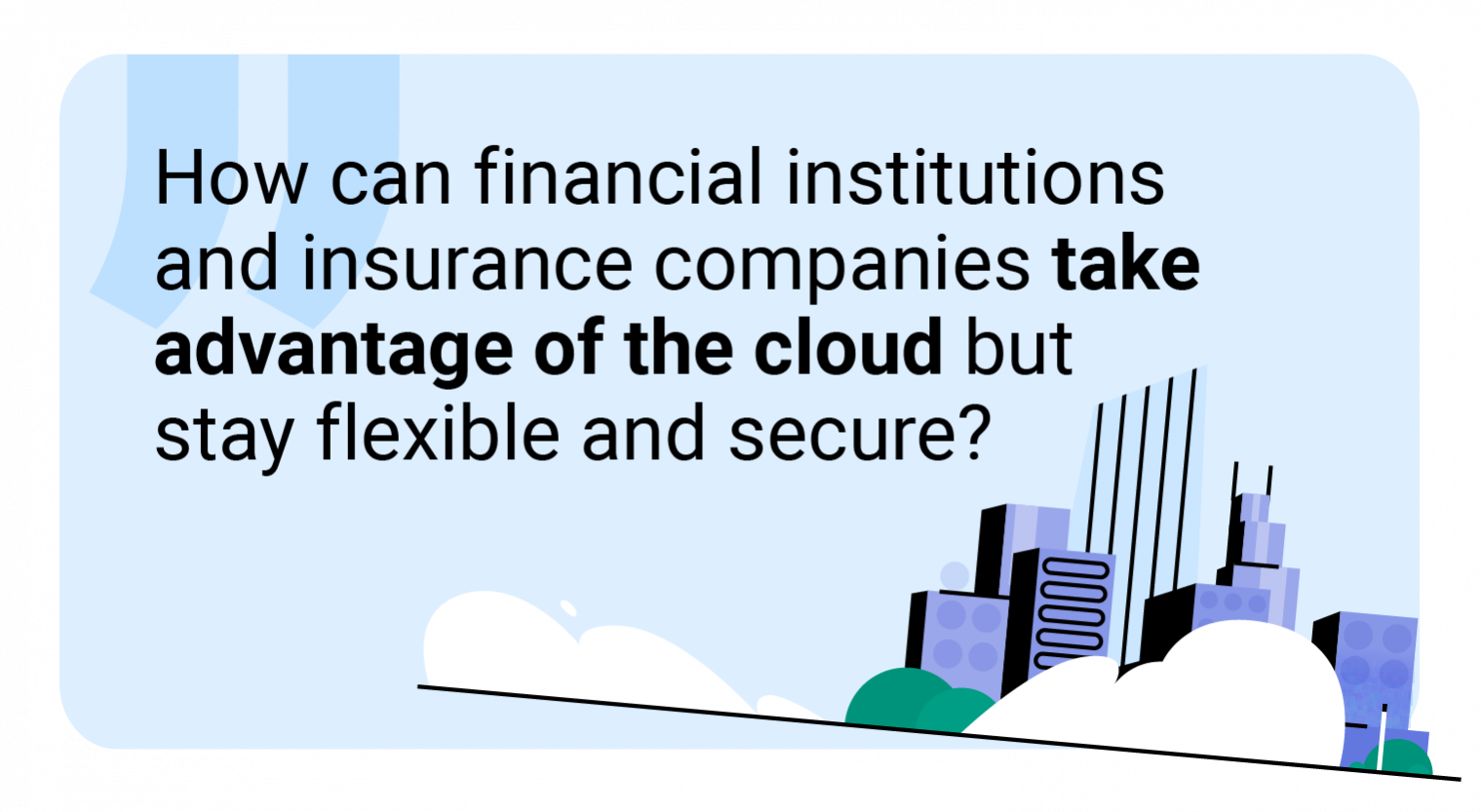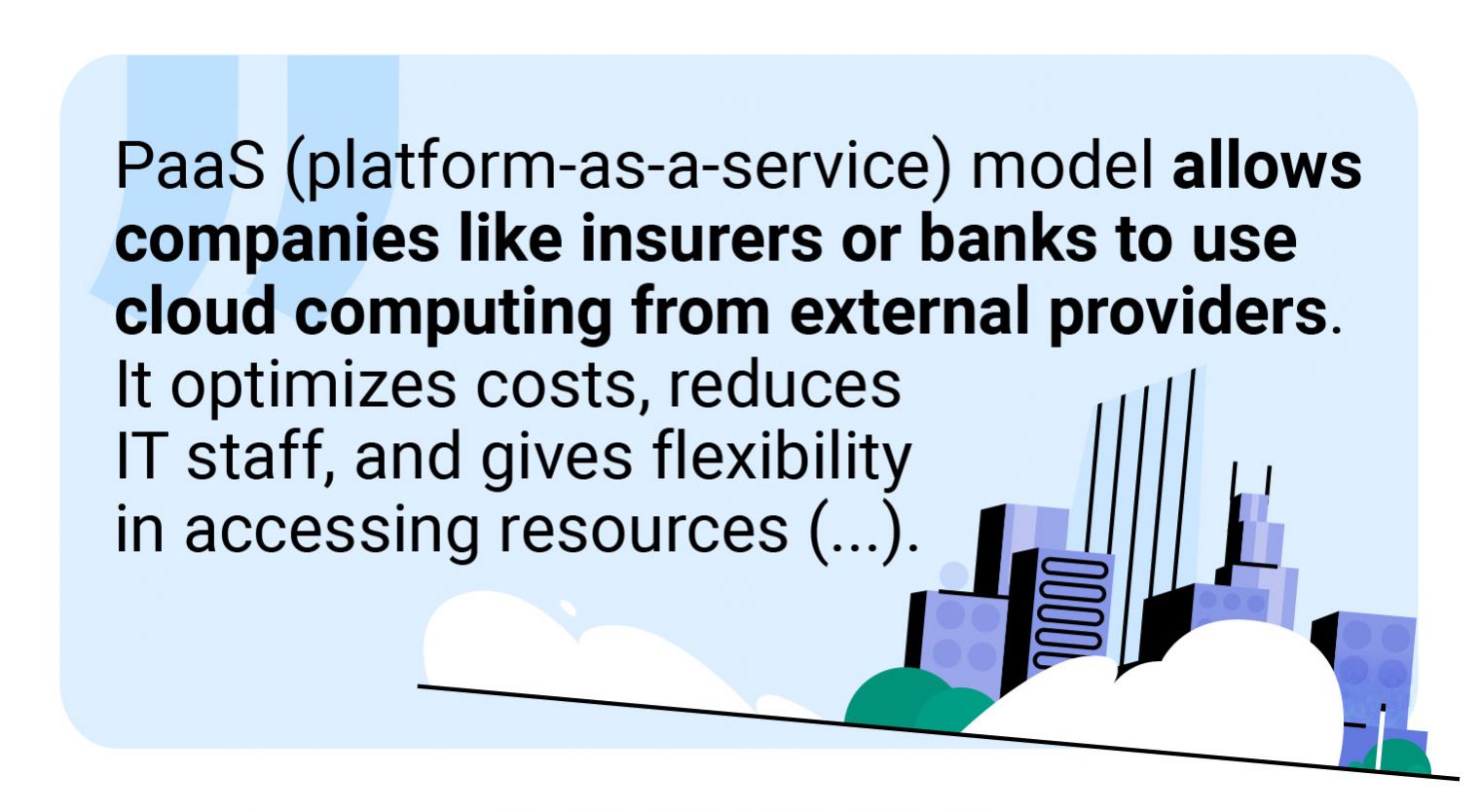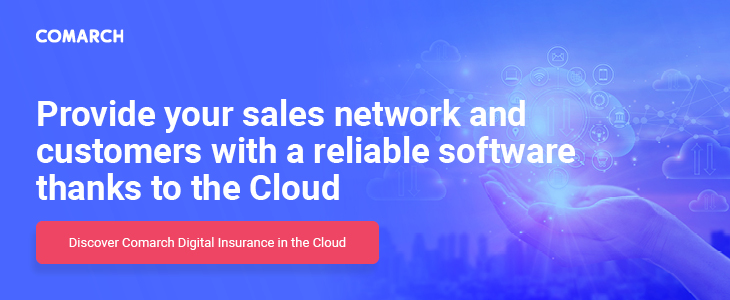Explore the Cloud: What’s Beyond SaaS?
- Published
- 5 min reading

There is some confusion surrounding the concept of the cloud. We typically associate the term only with the SaaS model: online application and software, paid for with a simple subscription fee. Software-As-A-Service is not the only cloud option, though, and sometimes there’s a better solution for the insurance and finance industry.
So many advantages
What makes SaaS so popular is the attractive benefits. There’s no need for long and expensive implementation or deployment. The model is open to customization with ready-made features and configuration options. The pricing is clear and the purchase involves no risky investments.

According to Statista.com, SaaS is attractive and constantly growing.
In 2021, the software as a service (SaaS) market is estimated to be worth approximately 145.5 billion U.S. dollars.
This more than doubles the market size from 2014 (Statista). Plus, by 2025, this value will increase by up to $99.99 billion, progressing at a CAGR of over 11% during the forecast period (Reportlinker). The model is available to many individual users, but companies also want in.
Where’s the catch?

There are a few features of SaaS that make it not as appealing to businesses. For example:
- When it comes to applications such as human capital management (HCM) software, collaboration software, and customer relationship management (CRM), the public SaaS model has high penetration rates (Statista). However, these applications are common and generic – not dedicated for any specific branch of business.
- The basic configuration options are limited and not sufficient for demanding business clients. The standard mode of configuration does not allow to make adjustments to the comprehensive processes conducted in a company, or to build competitive differentiators.
- Even though a user or a group of users always have access only to their own data, all of them are technically using the same application with multi-tenant architecture. This means that data is not physically isolated. The provider takes care of security and protects data as much as possible, but very often it is not enough for a financial institution which has to abide by legal restrictions and compliance requirements.
Those are the three main issues to consider before choosing this cloud model.
Weighing the pros and cons
When taking into account all of the above, SaaS might not seem like the perfect solution for everyone anymore. Even if the model’s price is very attractive, the eventual cost of limited personalisation and lack of control may prove to be greater than the price of a different model. This leads us to consider another important topic within the realm of the cloud – the deployment models.

The most popular ones are private and public cloud. The SaaS model is connected with the public cloud, which means that cloud computing providers share a cloud infrastructure between a large number of customers. Only the private deployment model can guarantee that data will be physically isolated. But the private cloud is usually not available with the SaaS model.
The question is, how can financial institutions and insurance companies take advantage of the cloud but stay flexible and secure? The real value of cloud computing is hidden deeper. Not in the conditions under which providers offer software as a service, but in the technology they use to optimize costs.

What’s the other way?
Apart from the multi-tenant architecture, which allows providers to share a fixed cost between many users, there is also a new way to save resources. The use of containers and their arrangement can significantly reduce storage and, as a result, also cut down costs.
The technologies that support virtualization and automatic computer application deployment help to scale and manage containerized applications. This also aids in optimizing human resources, thanks to the automatic execution of a larger workflow or process. In order to combine these technological benefits with necessary business values, the financial institution can use something else instead of the obvious SaaS.

The not-nearly-as-popular PaaS (platform-as-a-service) model allows companies like insurers or banks to use cloud computing from external providers. It optimizes costs, reduces IT staff, and gives flexibility in accessing resources and creating business features and processes, while preserving all the benefits from the more traditional setups.
The power of PaaS
SaaS is a complete model, giving access to infrastructure and applications with a single subscription fee. PaaS, on the other hand, allows to use the cloud infrastructure for any purpose and in any way.

After gaining access to the infrastructure, the next step is to deploy the best application that works in the cloud and take advantage of deployment automation and optimization of resources. Both cloud-native and cloud-optimized applications will be up to the task. They can provide more industry-oriented features in comparison to common CRMs available in SaaS.
If need be, the PaaS model also enables the private cloud option; this way, a single company can obtain exclusive access. With a cloud-optimized application, the company can manage the entire scope of functionalities and adjust them to their unique requirements.
The process of development and deployment of such an application is also faster and can be done more frequently, thanks to the Continuous Integration and Continuous Development approaches, which are common for cloud-native and cloud-optimized applications. Thus, all new features and error fixing can be done faster than ever. This is yet another benefit that the cloud infrastructure can bring to the company.
Hard choice
Some still prefer the SaaS model over the private cloud which has better protection and flexibility. There is no one simple choice between SaaS or PaaS, and public or private. As long as the limitations of SaaS don't outweigh its benefits, the model can be used even by financial institutions.
Usually it is the strategic parts of data that have to be highly protected and only key processes need a unique design. Hence, the PaaS model with the private cloud will be the best fit; claim management is a good example because protection rules and security standards are a requirement here. As a result, companies can choose the hybrid approach, which utilizes both the public and the private cloud infrastructure.
Many areas of business can benefit from applications set in a cloud model different than SaaS. It is always a good idea to combine the advantages of both the public and the private option.
Sources:
Human capital management (HCM) software, collaboration software and customer relationship management (CRM) software are among the applications where public cloud SaaS has a high penetration rate.
https://www.statista.com/statistics/510333/worldwide-public-cloud-software-as-a-service/
In 2021, the software as a service (SaaS) market is estimated to be worth approximately 145.5 billion U.S. dollars. SaaS applications are run in the cloud and usually accessible through desktops and mobile applications, as well as through a web interface.
https://www.statista.com/statistics/505243/worldwide-software-as-a-service-revenue/

Comarch Digital Insurance Product Manager
